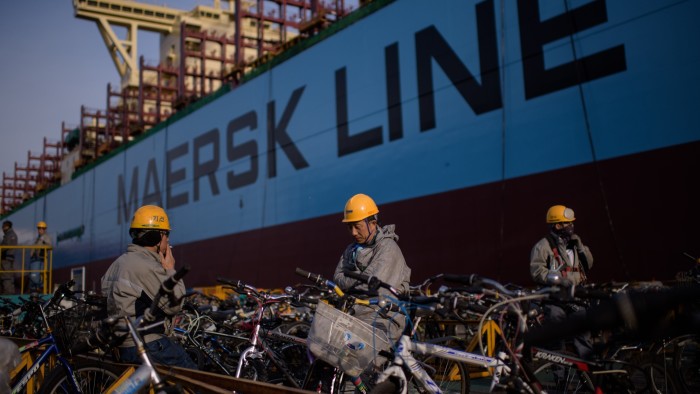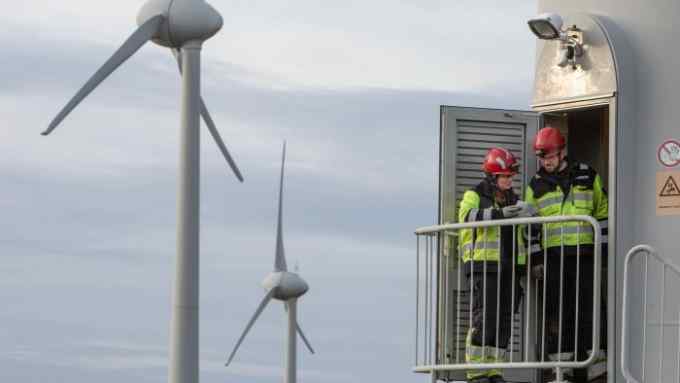Shipping lines return to proven power of wind

Roula Khalaf, Editor of the FT, selects her favourite stories in this weekly newsletter.
Shipping is going back to the future. Thousands of years after the Egyptians first used sails to move boats along the Nile, big businesses are once again considering the power of wind to transport goods around the world.
From giant kites to towering sails, technologies are being developed to propel vessels with less need for fossil fuels, just as the elevated cost of energy and stricter environmental regulations put pressure on the shipping industry to clean up.
Wind power enthusiasts believe these technologies should play a leading role in ambitions to eliminate carbon emissions from the supply chain. Others, however, have pointed to the limited benefits on certain ships or trade routes. They have also questioned whether the shipping industry, which has been one of the most resistant to decarbonisation, can be incentivised to invest the millions needed to rebuild the global fleet.
“Back in 2014, I’d walk into a room and pretty much everybody would say: ‘Oh no, he’s going to talk about this crackpot idea’,” says Gavin Allwright, secretary-general of the International Windship Association, which represents various start-ups developing wind propulsion systems. But he suggests attitudes have “fundamentally changed”.
Allwright notes that, after a handful of companies started installing wind propulsion technology on their ships, “I was able to go into conversations and say: ‘Your competitors are doing this, why aren’t you?”
In 2018, Maersk — then, the world’s largest container shipping group — installed two 30-metre-high rotor sails on a tanker ship: the Maersk Pelican. These spinning sails, designed to propel the vessel by changing the speed of air flow around it, were hailed as an opportunity to reduce the Pelican’s reliance on fuel and create a “new playing field”.
More recently, US food company Cargill announced plans to install two folding sails on the deck of a bulk carrier, built by Mitsubishi in 2017 and chartered by Cargill.
“We’ve been intrigued by wind for a very long time,” explains Jan Dieleman, president of Cargill’s Ocean Transportation division, who anticipates the retrofitted vessel will be ready to set sail by spring. He says wind “clearly has a role to play in minimising” the amount that needs to be spent on green propulsion methods, which remain more expensive than fossil fuels.
Wind power advocates hope that tougher environmental regulations will now drive wider investment in the technology. Last year, six countries submitted a paper with the IWA to the UN’s International Maritime Organisation (IMO), stating that wind propulsion systems were “ready, sufficiently mature and available” to help shipping reduce emissions.
Erik Grundt, an analyst at research firm Rystad Energy, says the IMO’s recent introduction of Carbon Intensity Indicator regulations, which require every ship to be rated for carbon efficiency, will add to the pressure on owners to cut emissions.
“We’re going to see an explosion in rotor sail adoption,” he predicts.
Grundt argues that, while clean fuels such as hydrogen and ammonia raise concerns over their cost and toxicity, wind is “free” and sails are “proven technologies”.
However, industry observers say investment is being held back by uncertainty over how much money and energy today’s wind propulsion systems can save when used on large vessels, many of which carry more than 100,000 tonnes of cargo.
Environmentalists have also argued that regulations set by the IMO remain too weak to drive meaningful change, despite a pledge by its member states to halve shipping emissions by 2050. An assessment of 16 major shipping groups by Rystad Energy found that only one, Maersk, had committed to decarbonisation by ruling out fossil fuels and natural gas.
And even Maersk has acknowledged that progress must be quicker. In 2021, it sold the Pelican after an analysis found its rotor sails led to only an 8 per cent drop in fuel consumption in a year.
“[An 8 per cent reduction in fuel consumption] doesn’t get you [to a 50 per cent overall reduction in emissions],” points out Tristan Smith, a shipping researcher at UCL. “If you consider that the wind doesn’t [always blow] in the right direction, that’s where the [benefit of wind propulsion] reduces.”
A reset of the global supply chain — with many western companies reconsidering their reliance on Asia since the Covid-19 pandemic and a US-China trade war — only adds to the uncertainty over wind propulsion’s likely benefits. “You might be trading on a route that’s really good for wind this year, but all of that maths could change dramatically,” Smith acknowledges.
Although stricter regulations would lead “a lot of people to look at wind more seriously”, he fears that there is an “absence of a strong incentive at the IMO”. The CII regulations, introduced this year, have been widely criticised by environmentalists who say shipping companies could exploit loopholes to flatter their carbon efficiency rating without making meaningful change.
Cargill’s Dieleman says that the cost of installing wind propulsion systems is also “holding people back”.
“You need to be realistic that we’re not just going to go back to sailing boats,” he says, adding that Cargill’s first wind-powered ship will be a “trial”.
It would “not make a lot of economic sense” to use the technology across Cargill’s fleet at this stage, Dieleman concludes — given that it could take seven years to make back the money the group has invested already.
Even if every company decided to overhaul its shipping fleet today, it would be some time before every vessel was using wind power. Soaring freight rates and a subsequent surge in profits during the pandemic have encouraged some shipping companies to splurge on new ships — few of which will have wind-propulsion systems.
“You probably won’t see a massive amount of wind ships before 2026 or 2027,” suggests Dieleman. “That’s just the lead time we have in this industry.”
Allwright says one of the main challenges continues to be “perception”. “It’s like: let’s bring horses back to road transport . . . It’s seen as going back to the past,” he explains. “That perception has been something of a battle.”
Climate Capital

Where climate change meets business, markets and politics. Explore the FT’s coverage here.
Are you curious about the FT’s environmental sustainability commitments? Find out more about our science-based targets here

Comments